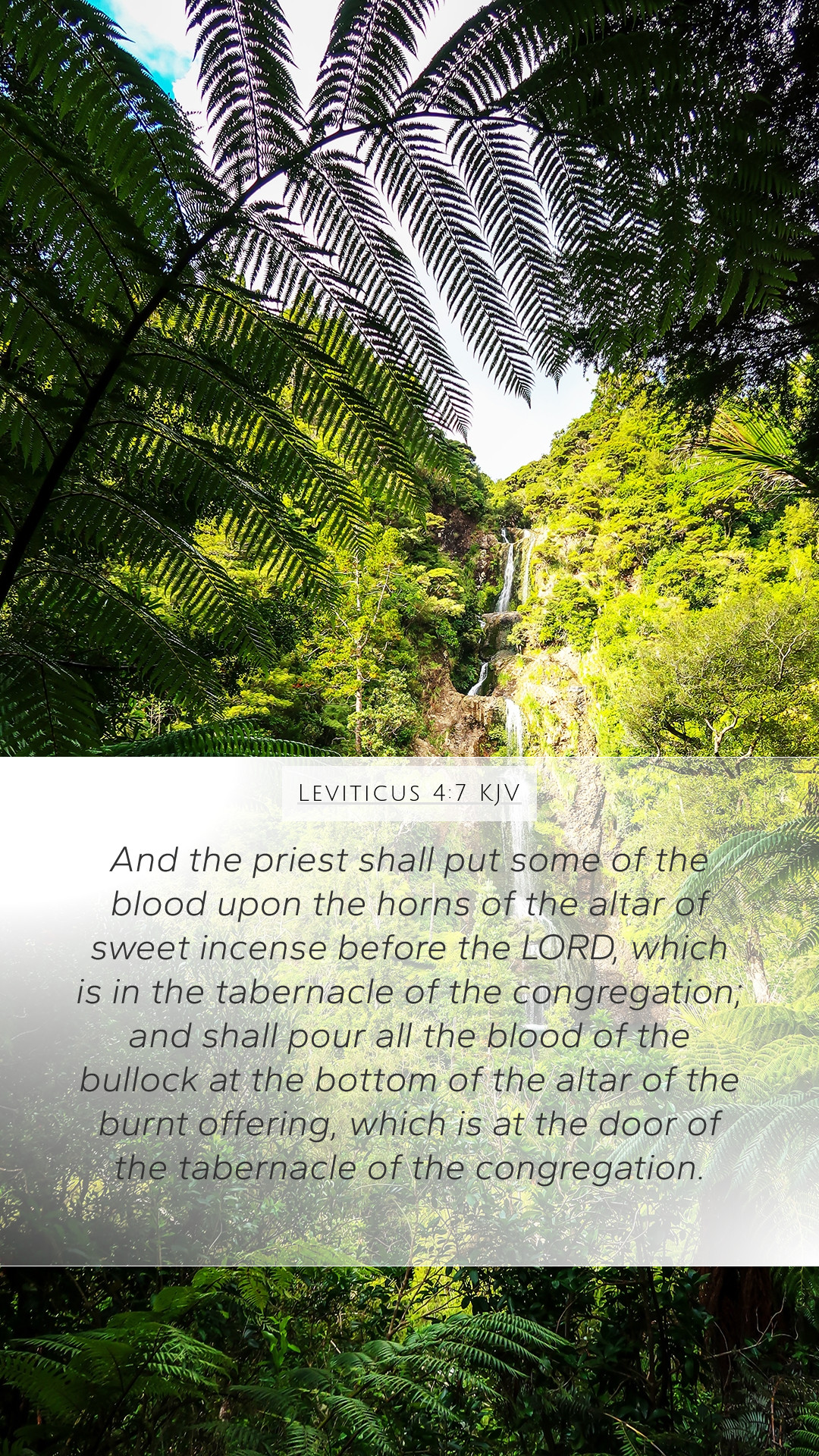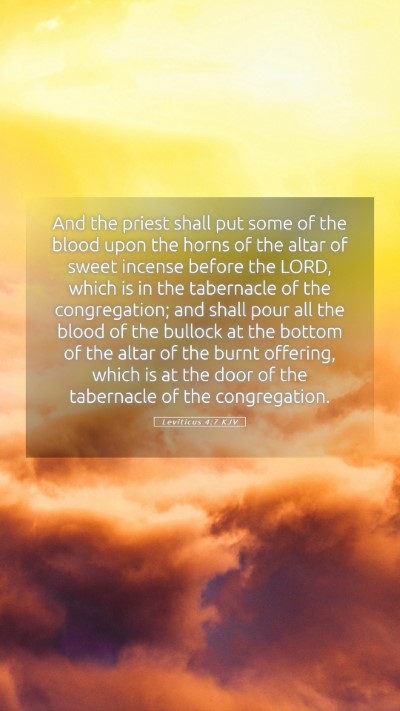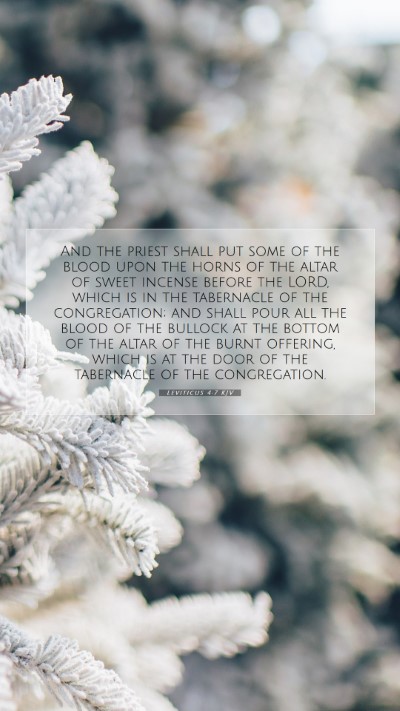Leviticus 4:7 states: "And the priest shall take some of the blood of the sin offering, and put it upon the horns of the altar of sweet incense before the Lord, which is in the tabernacle of the congregation; and shall pour all the blood of the bullock at the bottom of the altar of the burnt offering, which is at the door of the tabernacle of the congregation."
This verse speaks to the intricate sacrificial system established in the Old Testament, particularly concerning sin offerings and the role of the priest in administering atonement for the people.
In understanding this verse, we find deep significance in the actions prescribed for the priest, symbolizing the seriousness of sin and the necessity of atonement. Several public domain commentaries provide insight into this verse:
-
Matthew Henry's Commentary:
Henry emphasizes the symbolic nature of the sacrifices, noting that the act of sprinkling blood on the altar represents the transfer of guilt from the sinner to the offering. This ritual underscores God's mercy, as He provides a means for reconciliation with sinful humanity.
-
Albert Barnes' Notes:
Barnes explains the importance of blood in the sacrificial system, indicating that it represents life and is essential for atonement. He highlights that the priest's actions serve as a reminder of the cost of sin and the need for a mediator between God and man.
-
Adam Clarke's Commentary:
Clarke points out the role of the altar of sweet incense, signifying prayer and worship. He suggests that the placement of blood on the altar illustrates how the sacrifice connects the worshipper to God, establishing a relationship restored through atonement.
The practices indicated in Leviticus 4:7 reflect the larger theme of holiness and the need for purification within the community of Israel. Each step in this process reinforces the gravity of sin and the lengths to which God goes to restore humanity to a right relationship with Him.
Key Themes and Concepts:
- Sin and Atonement: The necessity of sacrifices for sin, highlighting the seriousness of violating God's laws.
- The Role of the Priest: A mediator who represents the people before God, performing the rituals of atonement.
- The Blood of the Sacrifice: Symbolizing life, the blood is a central element in the sacrificial system, emphasizing substitutionary atonement.
- The Altar as a Sacred Place: The altar signifies the meeting point between God and man, where sacrifices are presented.
Cross References:
- Hebrews 9:22 - Emphasizes the significance of blood for the forgiveness of sins.
- 1 John 1:7 - Discusses the cleansing power of Jesus' blood.
- Exodus 29:12 - Details the ritual for consecrating the altar.
This analysis reveals the depths of biblical teachings found in Leviticus 4:7, and how they continue to resonate in Christian theology today. Understanding Scripture is essential for personal growth and communal worship, making Bible study tools and resources invaluable for deeper insights into similar verses and themes within the entirety of Scripture.


